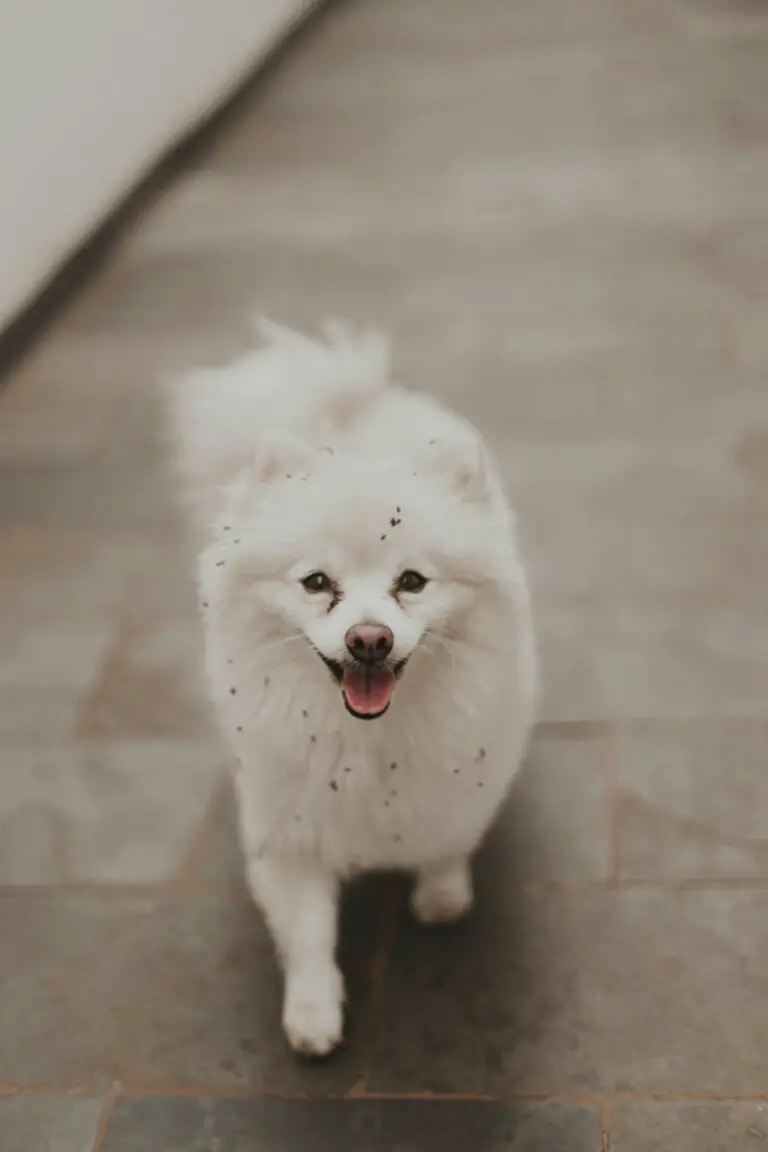Beautiful, cuddly, and confident, the Bichon Frise is one of the most popular pet dogs in the world. Since ancient times, this irresistible cotton ball has relied on her beauty, charisma, and intelligence to fend off the ups and downs of history. Related to the Maltese, the Havanese, and the Coton de Tulear, its origin endorses it as a companion dog par excellence.
What is the history of the Bichon Frise? How, when, and where did this breed arise? Here is a list of the main facts to keep in mind.
Table of Contents
The history of the Bichon Frise told in 5 stages
1. Ancestors: from the barbet to the bichon Tenerife
The most widely accepted version of the origin of the first Bichon Frise describes it as a dog of Mediterranean descent. His ancestor is said to have been the barbet or water spaniel, a medium shaggy dog from which the poodle is also descended.
Precisely, the name bichon is derived from the term barbican, which is the diminutive of the word barbet. The barbet group of dogs evolved into 4 separate breeds: the Bolognese Bichon, the Havanese Bichon, the Maltese Bichon, and the Tenerife Bichon.
The latter is considered the direct ancestor of today’s Bichon Frise. These active and affectionate dogs are said to have arrived in the Canary Islands, specifically the island of Tenerife, where historians believe the breed ended up being developed. It is very likely that they traveled to the island as a pet for Spanish sailors.
While the earliest types of barbet served as working dogs given their ability to retrieve birds from the water, the bichon, a much smaller type of dog, emerged as a companion animal, not a hunting dog.
Sometime later, between the years 1200 and 1300, Italian sailors brought the Bichon Tenerife to Italy, reintroducing it to the European continent. It should be noted that by the year 1300, Italy had become a center of trade and commerce, and with the advent of the Renaissance, the country was immersed in a period of exploration.
Once reintroduced to mainland Europe, the Tenerife Bichon attracted the attention of the nobility and the new Italian middle class. His coat was often cut and groomed in the “lion” style, a cut that was very popular at the time.
Already in the late 1400s and early 1500s, the breed made its entry into France following the French invasion of the Italian territory. Apparently, the French took the dog as spoils of war. In addition, many Italian artists and scholars headed north to serve the French courts, taking their favorite furry pets with them.
2. The road to popularity
During the reign of Francis I (1515-1547), the bichon managed to establish himself in the society of the French royal court. However, his true peak of popularity as a companion dog occurred under the reign of Henry III (1574-1589).
One of the most notorious stories of the time tells of how the English king transported his beloved bichons with the help of a basket. Said basket or basket was attached to his neck through the use of ribbons, which allowed him to have them very close at all times during the day.
This caused the other people in court to want to imitate the monarch, making the little white dog a popular and pampered pet.
Ladies of the royal court used the bichon as a kind of accessory, either tucked under the arm or wrapped in the folds of a dress or shawl. This dog was treated almost as if he himself had royal blood.
It is said that later, during the reign of Napoleon III (1808-1873), the breed experienced another period of popularity as a pet of French royalty. Likewise, he gained great notoriety in Belgium.
The presence of the bichon in art
Over the years, many artists have included the popular lapdog in their portraits. Some of the most famous were Titian (1490-1576) from Italy, Sir Joshua Reynolds (1723-1792) from England, Jean Honoré Fragonard (1732–1806) from France, and the artist Francisco Goya (1746-1828) from Spain. His works of art help verify the presence of the bichon in different regions and at different times.
Did you know…? In 1795, the Spanish artist Francisco de Goya made a life-size portrait known as La Duquesa Blanca. The portrait belonged to the renowned Spanish aristocrat Doña María del Pilar Teresa Cayetana de Silva-Álvarez de Toledo y Silva Bazán, the 13th Duchess of Alba de Tormes, who posed with a specimen not much higher than the hem of her dress ( upper quadrant right in the image ).
There is some debate about whether the dog next to you is a Bichon Frize, Maltese, or Bolognese.
3. Temporarily out of fashion
By the end of the 19th century, the Bichon Frise was no longer as popular a breed as it used to be. In fact, he was often seen as a street dog or doing tricks at fairs and traveling circuses.
Somehow, his popularity plummeted among royalty. Monarchs like Queen Victoria and Queen Elizabeth preferred other breeds, like the Pekingese and the Pembroke Welsh corgi (respectively).
But the bichon’s charm, cunning, and stamina helped it endure. Traits like docility and love for his owner never went away, even after he started mating with other types of dogs. These characteristics served to show his worth in other facets, for example as a guide and entertainment dog.
4. The rise of the standard Bichon Frise
After World War I, Bichon fanciers in France and Belgium recognized their potential and began to establish their own lines through controlled breeding programs.
On March 5, 1933, the Société Centrale Canine de France (Kennel Club de France) adopted the first official breed standard, as written by Madame Abadie de Steren Vor Kennels.
On October 18, 1934, the Bichon Frisé was admitted for the first time into the official registry of the French Kennel Club.
Since the breed was known by two names, “Tenerife” and “Bichon”, the then President of the International Canine Federation (FCI), Mme. Nizet de Lemma proposed a name based on the characteristics of the dog. It was then that the name “bichon à polio frise” came about, which means bichon with curly fur.
This is where the English version of the bichon frise (curly lap dog) and the Spanish bichón frise derive.
The FCI recognizes the Bichon Frise is a Franco-Belgian breed with the right to be registered in the Stud Book of all countries. Currently, the breed is recognized in the vast majority of countries, but at that time it was only recognized by 3 nations: Belgium, France, and Italy.
As explained, the development of the bichon in the United States was what led to its recognition in the rest of the world.
Did you know…? The first Bichon Frize registered in Belgium was named Pitou (born March 23, 1924), while the first registered specimen in France was a female named Ida (born October 18, 1934).
5. The true entrance to the international stage
It is known that at the end of World War I some American soldiers took the Bichon Frise with them back to the country. However, at that time no effort was made to reproduce them or keep records.
It was not until 1956 that Mr. and Mrs. Francois Picault began breeding the breed after moving to the state of Michigan with their 6 Bichon Frize specimens. The Picaults had already had their first litter when they met dachshund breeder Azalea Gascoigne and collie breeder Gertrude Fournier.
Later, both breeders also began breeding the Bichon Frise and began efforts to organize with other admirers and enthusiasts. As a result, the first Bichon Frize Club of America was established in May 1964. From that moment the number of interested parties began to increase.
Work began to establish the breed in the country and gain recognition from the AKC (American Kennel Club). Likewise, several groups of breeders began the formation of clubs at the local level.
September 1, 1971, was a big day for the bichon and their owners as they were allowed to compete for the first time in the AKC shows of the miscellaneous class. Sometime later, on October 10, 1972, it was recognized as the official breed number 119.
In 1975, the AKC finally recognized the Bichon Frise Club of America.
The Bichon Frise’s increasing participation in American shows/rings, coupled with its great beauty and charming personality, set the stage for this breed to become internationally recognized and admired.
It may interest you:
- What is the Origin of the Schnauzer Breed? History, Types, and Curiosities
- What is the True Origin of the Rottweiler? History and Background
- What is the Origin of Pitbulls? Know the History and its Ancestors



